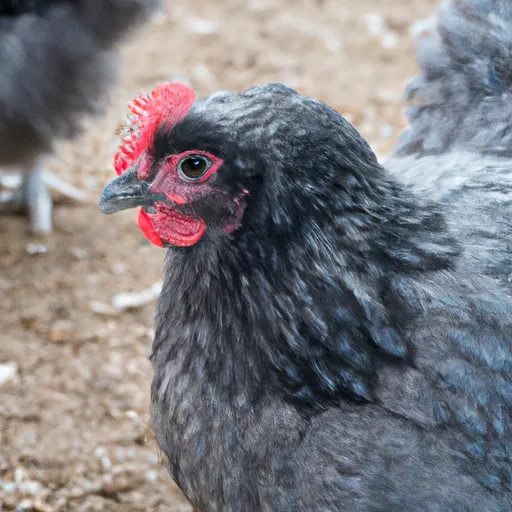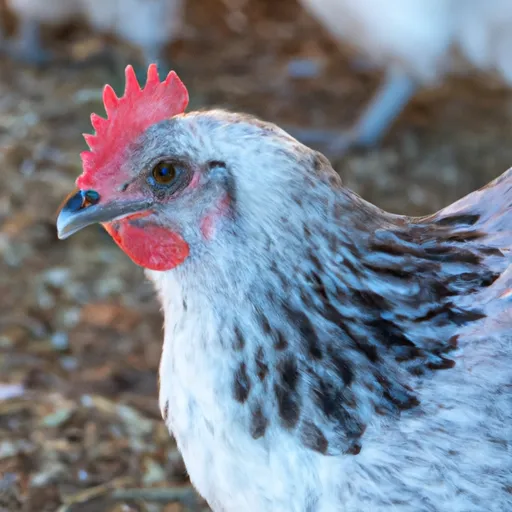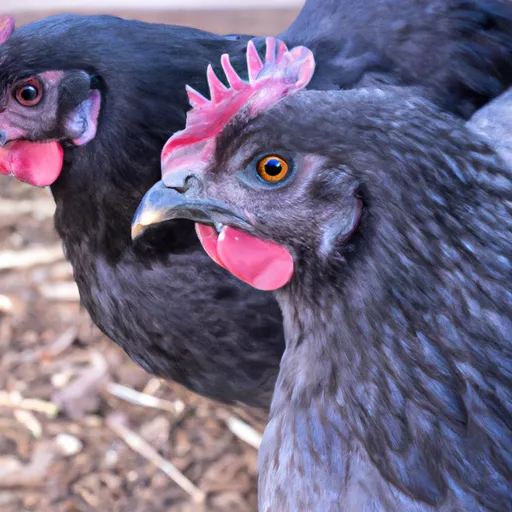How Rare are Lavender Orpington Chickens?
If you've ever wondered about the rarity of lavender Orpington chickens, you're in for a treat.
These unique birds, known for their beautiful lavender-colored feathers, have sparked curiosity among poultry enthusiasts.
From the stunning hue of their plumage to the question of the eggs they lay and their temperament, there's much to discover about these fascinating creatures. So, let's explore the world of lavender Orpington chickens and find out just how rare they truly are.
1. Introduction
Welcome to the world of Lavender Orpington chickens!
These beautiful birds have quickly become a favorite among poultry enthusiasts for their striking coloration and delightful personalities.
In this comprehensive article, we will explore everything you need to know about Lavender Orpington chickens, from their description and history to breeding practices and care requirements.
So, whether you are a seasoned chicken keeper or just starting out, get ready to discover the wonders of Lavender Orpingtons!
2. What are Lavender Orpington Chickens?
2.1 Description
Lavender Orpington chickens are a unique and eye-catching breed known for their stunning lavender plumage.
They are a variety of the popular Orpington chicken, which originated in the United Kingdom in the late 1800s. Lavender Orpingtons have a soft, solid-colored feathering that gives them a charming and elegant appearance, making them stand out from other chicken breeds.

2.2 History of Lavender Orpington Chickens
The history of Lavender Orpington chickens dates back to the early 20th century when breeders started to experiment with creating new color variations of the Orpington breed.
Lavender Orpingtons were the result of a genetic mutation that caused a dilution of the black pigment in the feathers, resulting in lavender-colored plumage.
Over the years, dedicated breeders have worked to refine and stabilize the Lavender Orpington variety, ensuring that it meets the breed standard while maintaining its unique lavender color.
2.3 Characteristics
Lavender Orpington chickens possess several distinctive characteristics that set them apart from other breeds. Apart from their lavender plumage, they have a broad, deep body, a low stance, and a large, round head.
Their eyes are a captivating shade of reddish-brown, which adds to their overall allure. Lavender Orpingtons also have feathered legs and a gentle, docile expression, making them truly charming birds to behold.
2.4 Temperament
When it comes to temperament, Lavender Orpington chickens are known for their friendly and calm nature.
They are docile and gentle birds, making them a popular choice for families with children or those looking for a peaceful backyard flock. Lavender Orpingtons are also known to be quite curious and sociable, often enjoying human companionship and being comfortable around other pets.
Their friendly disposition makes them a joy to interact with and a wonderful addition to any flock.
3. Breeding Lavender Orpington Chickens
3.1 Genetics of Lavender Orpington Chickens
Understanding the genetics behind Lavender Orpington chickens is crucial for successful breeding. The unique lavender coloration is the result of a recessive gene called the 'lavender' or 'self-blue' gene.
This gene dilutes the black pigment in the feathers, resulting in the beautiful lavender hue seen in Lavender Orpingtons. To produce Lavender Orpington offspring, both parent birds must carry this recessive gene.
3.2 Breeding Practices
Breeding Lavender Orpington chickens requires careful selection of parent birds to ensure the desired lavender coloration and breed characteristics are passed on to the next generation.
It's important to choose healthy, high-quality Lavender Orpingtons with good conformation and the correct coloration for breeding. Providing proper nutrition, space, and a stress-free environment is also essential for successful breeding.
3.3 Challenges in Breeding Lavender Orpington Chickens
Breeding Lavender Orpington chickens can present some challenges. Firstly, since the lavender coloration is a recessive gene, it requires both parent birds to carry the lavender gene in order to produce Lavender Orpington offspring.
This means that breeding Lavender Orpingtons can be more complex than breeding other color variations of the Orpington breed. Additionally, maintaining genetic diversity within the Lavender Orpington population is important to avoid potential health issues associated with inbreeding.
3.4 Selective Breeding for Lavender Color
To ensure the lavender coloration remains true and vibrant, breeders engage in selective breeding practices.
This involves carefully choosing breeding pairs that exhibit the desired lavender color and have strong breed characteristics.
Over time, this selective breeding helps to improve the lavender coloration while maintaining the health and quality of the Lavender Orpington breed.
4. Availability and Rarity of Lavender Orpington Chickens
4.1 Limited Breeders and Hatcheries
Lavender Orpington chickens are considered relatively rare compared to other chicken breeds.
This is due to the fact that there are relatively few breeders and hatcheries that specialize in breeding and selling Lavender Orpingtons. However, as the breed gains popularity, the number of breeders and hatcheries offering Lavender Orpingtons is gradually increasing.
4.2 Demand and Popularity
Despite their rarity, Lavender Orpington chickens have gained a significant following among poultry enthusiasts.

Their unique lavender plumage and friendly temperament make them highly sought after. As a result, there is a growing demand for Lavender Orpingtons, particularly among backyard chicken keepers and those interested in exhibiting these beautiful birds at poultry shows.
4.3 Price Range and Market Value
The price range for Lavender Orpington chickens can vary depending on factors such as the bird's age, quality, and location of the breeder.
Generally, Lavender Orpington chicks can range in price from $10 to $30, while adult birds or breeding pairs can cost anywhere from $50 to $200 or more. It's important to keep in mind that the rarity and unique coloration of Lavender Orpingtons contribute to their higher market value compared to more common chicken breeds.
4.4 Difficulty in Finding Lavender Orpington Chickens
Due to their rarity, finding Lavender Orpington chickens may require some effort and patience. However, with the increasing popularity of the breed, it is becoming easier to find breeders and hatcheries that offer Lavender Orpingtons.
Online poultry forums, social media groups, and specialized poultry magazines can be valuable resources for connecting with breeders and finding Lavender Orpington chickens for sale.
5. Care and Management of Lavender Orpington Chickens
5.1 Housing and Space Requirements
Lavender Orpington chickens, like other chicken breeds, require a safe and comfortable living environment. They should be provided with a secure coop or chicken house that offers protection from predators and inclement weather.
The general rule of thumb is to provide at least 4 square feet of coop space per bird, along with adequate outdoor space for foraging and exercise during the day.
5.2 Feeding and Nutrition
Proper nutrition is essential for the health and well-being of Lavender Orpington chickens. A high-quality commercial chicken feed formulated for laying hens should be the main component of their diet.
In addition to a balanced feed, offering fresh water, grit, and occasional treats such as fruits, vegetables, and mealworms can help keep your Lavender Orpingtons happy and healthy.
5.3 Health and Disease Considerations
Just like any other chicken breed, Lavender Orpington chickens are susceptible to certain health issues and diseases. Providing a clean living environment, regular health check-ups, and vaccinations (if necessary) can help prevent common poultry diseases. It's also important to be vigilant for signs of illness and address any health concerns promptly.
Consulting a poultry veterinarian or experienced chicken keeper can provide valuable guidance on maintaining the health of your Lavender Orpington flock.
5.4 Egg Production and Laying Patterns
Lavender Orpington hens are known for their excellent egg-laying capabilities. They typically start laying eggs at around 5-6 months of age and are known for their consistent and reliable egg production.
Lavender Orpingtons are considered a dual-purpose breed, meaning they are suitable for both meat and egg production. On average, they lay around 150-200 large, brown eggs per year, making them a productive addition to any backyard flock.
6. Intere
sting Facts about Lavender Orpington Chickens
6.1 Unique Lavender Coloration
Undoubtedly, the most striking feature of Lavender Orpington chickens is their mesmerizing lavender plumage. This unique coloration sets them apart from other chicken breeds and is a result of the recessive lavender gene.
Whether they are strolling around your backyard or gracing a show ring, Lavender Orpingtons are sure to capture attention with their stunning lavender feathers.
6.2 Broodiness and Mothering Instincts
Lavender Orpington hens are known for their strong broodiness and excellent mothering instincts. They have a natural tendency to go broody, meaning they will eagerly sit on a clutch of eggs to hatch them.
This broodiness makes them ideal for hatching and raising their own chicks or even being used as foster mothers for other breeds.
6.3 Size and Weight
Lavender Orpington chickens are considered large birds, known for their impressive size and weight. Fully grown roosters can reach an average weight of 10-12 pounds, while hens typically weigh around 8-10 pounds.

Their large size adds to their majestic appearance and makes them an impressive addition to any backyard or farmstead.
6.4 Interaction with Other Chicken Breeds
Lavender Orpington chickens generally have a calm and gentle demeanor, which makes them excellent companions for other chicken breeds. They are not known to be aggressive and tend to get along well with different chicken varieties.
Introducing Lavender Orpingtons to your existing flock can create a harmonious and peaceful backyard chicken community.
7. Comparison with Other Orpington Chicken Varieties
7.1 Lavender Orpington vs. Blue Orpington
Lavender Orpingtons and Blue Orpingtons are often compared due to their similar coloration. However, there is a distinction between the two.
Lavender Orpingtons have a diluted, soft lavender plumage, while Blue Orpingtons have a more vibrant, slate-blue coloration. Additionally, Lavender Orpingtons have a slightly lighter body build compared to the robust shape of Blue Orpingtons.
7.2 Lavender Orpington vs. Buff Orpington
Lavender Orpingtons and Buff Orpingtons differ greatly in terms of coloration. While Lavender Orpingtons possess a striking lavender plumage, Buff Orpingtons have a warm, golden buff-colored feathering.
